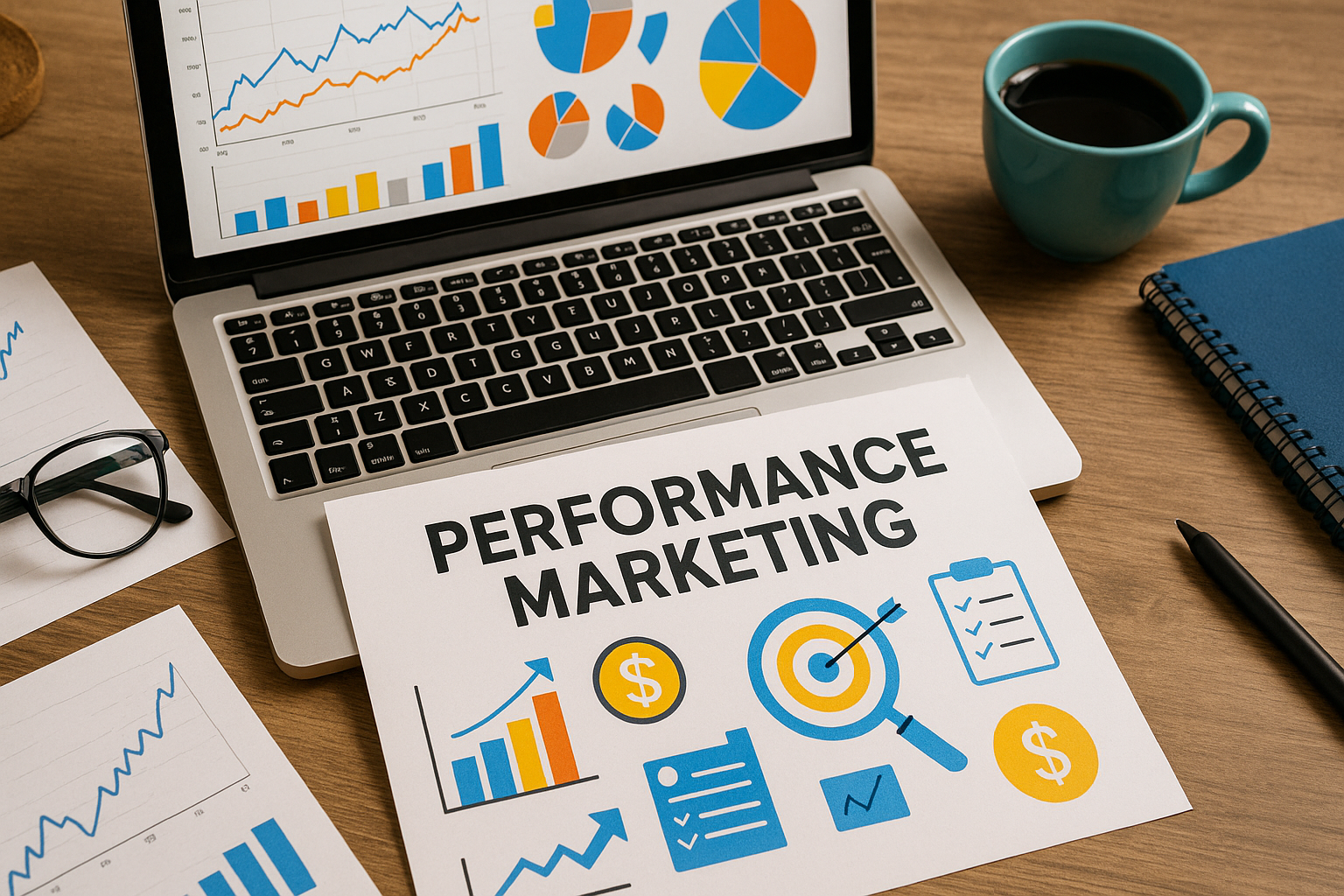In today’s fast-paced digital world, businesses can no longer afford to throw money at marketing strategies without clear, measurable results. That’s where performance marketing steps in—a data-driven, ROI-focused approach that’s transforming how brands spend their advertising budgets.
Whether you’re a startup looking to grow or an established brand wanting to scale efficiently, performance marketing ensures you only pay for results. But what exactly is it, and how does it work? Let’s break it down.
What Is Performance Marketing?
Performance marketing is a form of digital advertising where businesses pay marketing partners only when a specific action is completed—such as a click, lead, sale, or app download. Unlike traditional marketing, which charges upfront for exposure, this model aligns ad spend with outcomes.
Think of it as pay-for-performance advertising. You’re not paying for impressions or reach alone; you’re investing in measurable outcomes that contribute directly to your business goals.
How Does Performance Marketing Work?
Performance marketing involves a variety of platforms, channels, and partnerships to drive results. Here’s how the process typically works:
- Goal Setting
Businesses define what actions they want to track—clicks, leads, conversions, installs, or purchases. - Channel Selection
Campaigns are launched across digital platforms such as:
- Social media (Meta, Instagram, LinkedIn)
- Search engines (Google Ads, Bing)
- Affiliate networks
- Influencer partnerships
- Display and native advertising platforms
- Social media (Meta, Instagram, LinkedIn)
- Tracking & Attribution
Using tracking tools like UTM parameters, pixels, and affiliate IDs, marketers monitor each user interaction. This ensures every result can be attributed to its source. - Optimization
Campaigns are constantly tweaked based on real-time data. Poorly performing ads are paused, while top-performers are scaled. - Payment
You only pay when a desired action is achieved, making performance marketing highly efficient and budget-friendly.
Key Components of Performance Marketing
To run a successful campaign, several elements work together:
1. Advertiser (Brand or Business)
The entity looking to promote its product or service.
2. Publisher (Affiliate or Partner)
Websites, influencers, bloggers, or ad networks that promote the advertiser’s offer in exchange for a commission.
3. Tracking Platform
This system monitors performance, clicks, conversions, and payouts in real time.
4. Creative Assets
Banner ads, videos, landing pages, email templates, and other content used to drive engagement.
Benefits of Performance Marketing
Here’s why businesses across industries are adopting this model:
- ✅ Cost-Effective: You pay only when results are achieved.
- ✅ Measurable: Real-time tracking lets you see exactly what’s working.
- ✅ Scalable: Successful campaigns can be scaled without wasting budget.
- ✅ Low Risk: You control the budget, and there’s minimal upfront investment.
- ✅ Multi-Channel Reach: Allows access to a wide range of platforms and audience types.
Popular Performance Marketing Channels
Performance marketing is not limited to one platform. Here are some of the most effective channels:
● Affiliate Marketing
Third-party partners promote your product on their platforms and earn a commission for every lead or sale.
● Search Engine Marketing (SEM)
Using pay-per-click (PPC) ads on Google or Bing to target users actively searching for your services.
● Social Media Advertising
Highly targeted ads on platforms like Facebook, Instagram, TikTok, and LinkedIn.
● Native Advertising
Sponsored content that blends into the user’s content feed—ideal for brand storytelling.
● Influencer Marketing
Working with creators to promote products and track conversions via affiliate links or promo codes.
Performance Marketing vs. Traditional Marketing
| Feature | Traditional Marketing | Performance Marketing |
| Payment Model | Upfront costs | Pay-for-results |
| Measurability | Hard to track | Highly trackable |
| Risk | High | Low |
| Targeting | Broad | Hyper-targeted |
| Optimization | Limited | Real-time |
Best Practices for Performance Marketing Success
To get the most out of performance marketing, follow these proven strategies:
- Define Clear KPIs: Know what actions you want to pay for—leads, sales, installs, etc.
- Use Compelling Creatives: Eye-catching visuals and copy increase click-through and conversion rates.
- Optimize Landing Pages: Ensure your site is mobile-friendly, fast-loading, and built to convert.
- A/B Test Frequently: Always test headlines, creatives, and CTAs to find the best-performing combinations.
- Leverage Data: Use analytics to understand user behavior and refine targeting over time.
FAQs
Q. What is the biggest advantage of performance marketing?
A. The biggest advantage is that you only pay when desired actions—like sales or leads—are achieved, making it cost-efficient and results-driven.
Q. Is performance marketing suitable for small businesses?
A. Absolutely. It offers a low-risk way for small businesses to drive measurable growth without a huge upfront budget.
Q. Which platforms are best for performance marketing?
A. Google Ads, Facebook Ads, affiliate networks, and influencer platforms are among the most commonly used.
Q. How do I measure performance in real time?
A. Use tracking tools like Facebook Pixel, Google Analytics, UTM codes, or third-party tracking software to monitor clicks and conversions.
Q. Can performance marketing work alongside brand marketing?
A. Yes. While performance marketing drives immediate results, it can complement long-term brand awareness strategies for better impact.
Performance marketing has become the go-to strategy for businesses that want more control, better targeting, and clear ROI. Instead of guessing what works, brands now make data-driven decisions and pay only for real outcomes. For companies looking to scale faster and smarter, investing in professional performance marketing services ensures campaigns are executed with precision, transparency, and measurable success.
